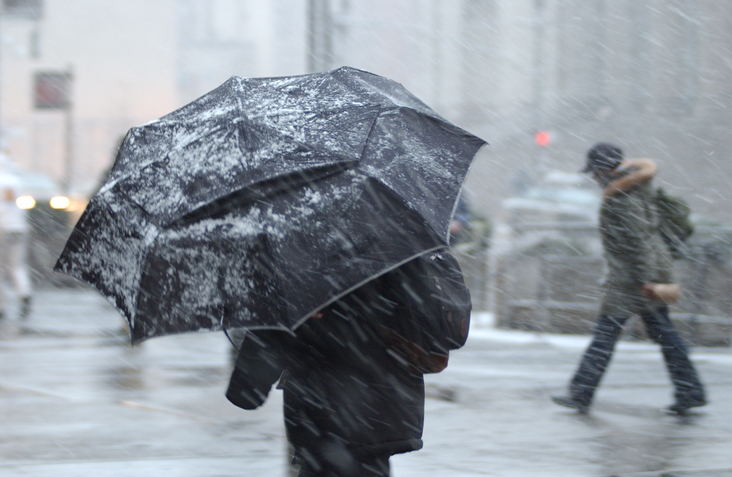Secure properties and plan journeys ahead of storms

Authored by Aviva
With storm warnings in place for many parts of the UK this week, Aviva is advising residents and business owners to carry out checks to their properties to help prevent damage. The insurer is also encouraging motorists to take extra precautions if they need to travel.
According to Aviva* research, almost a quarter of UK residents (23%) – equivalent to 6.4 million households** – have previously experienced damage to their homes due to extreme weather, with a third of UK residents (31%) concerned about potential damage to their homes during winter.
Kelly Whittington, director of property and speciality claims at Aviva said: “Storm Eunice is due to bring very strong winds to many parts of the UK, with some areas expected to experience gusts of up to 90 mph. The impact is expected to be widespread, affecting thousands of people across England and Wales.
“If it’s safe to do so, we’d urge people to check their properties and take preventative steps as soon as possible, to help minimise any damage the storms may cause. We’d also urge people to consider their travel plans this week and only make journeys which are absolutely necessary when the storms arrive.
“Should the worst happen, customers can register their claim online 24/7, and our claims teams are on standby and ready to help people whose homes, businesses or vehicles have suffered weather-related damage.”
Aviva customers wishing to make a claim can register their claim online at www.aviva.co.uk/help-and-support/claims
Aviva has put together the following advice to help people protect their properties and vehicles.
Before the storm – if it is safe to do so:
Check your roof: Look for loose or missing tiles, crumbling pointing or any other signs of damage. Also ensure any television aerials and satellite dishes are securely attached.Secure your fence: Make sure fence panels are fixed in place and garden gates are in good working order, to avoid panels flying away or gates swinging wildly in the wind.Remove hazardous branches: Cut down loose or overhanging branches in your garden, particularly those close to windows or power lines. But be careful: some trees are safeguarded and cannot be removed. Check with your local planning authority if you’re unsure whether a tree can be cut.Keep gutters clear of moss and leaves: If your gutters overflow during a downpour, it’s time to give them a good clean. Remember to make sure they’re securely fixed in place once you’ve finished.
Professionals perform the above jobs for a reason. So if a task involves climbing up a ladder or working near power lines, be sure to get expert help.
When a storm’s approaching: home
Secure garden furniture: Put away ladders, garden furniture, children’s toys or anything else that strong winds could send hurling around.Park vehicles in a garage: If you have a garage, use it. If you don’t have one, try to park well away from trees, walls or fences that could fall in the face of strong winds.Close and fasten doors and windows: Don’t forget to secure less frequently used entrances, like loft trapdoors.Keep pets indoors: Make sure pets are protected and small outside pets are brought indoors.Prepare a storm emergency kit: Be prepared just in case you need to leave your home in the midst of the storm. Pack warm clothes, medicines, a torch and batteries.It’s also a good idea to ensure your home insurance documents are easily accessible, just in case you need to contact your insurer.
When a storm’s approaching: motor
Plan your travels: If you are planning a trip in the next few days, consider whether you need to travel this week or whether you can reschedule your plans.If you do need to go out, make sure your car is equipped:Ensure you have enough fuel for your journey or your EV battery is charged. Vehicles use more fuel in heavy traffic and stop / start conditions and you may need to re-route your journey.Take a mobile phone with you and check the battery is fully charged.Pack a blanket, waterproof clothing and sturdy shoes, food and drink for you and your passengers, in case you get stranded or delayed.Be suitably equipped for an emergency – a shovel, heavy-duty jump leads, a tow rope, first aid kit, torch, spare fuel can, warning triangle and a fire extinguisher are all useful to keep in your car.When driving in poor weather, put your lights on and leave more room between you and the vehicle in front and allow more time for braking and accelerating.
During the storm
Once the storm hits, stay indoors as much as possible. Only head outside when it’s essential and only drive if your journey is absolutely necessary.
If you do hear something in your home break, don’t try to repair damage while the storm’s still in progress. Property can be repaired, but it’s more important to stay safe.
After the storm
If your home or belongings have been damaged, contact your insurer as soon as possible and let them know what’s happened.
List any damage to your property and don’t throw anything away in case it’s needed for the claims process. It’s also a good idea to photograph or video the damage.
While you wait for the professionals to take care of any significant repairs, there are several things you can do to start the clean up once it’s safe to do so:
Use a plastic sheet to temporarily patch up damaged parts of your home that you can get to safely and easily.You may wish to get a quote from a local tradesperson for repairs, for your insurer to review. This can sometimes be the quickest option during major weather events when lots of people are making claims.Check in on vulnerable neighbours or relatives and help them make any arrangements for repairs.Remember to keep clear of electrical or telephone cables that have been blown down or are hanging loose





